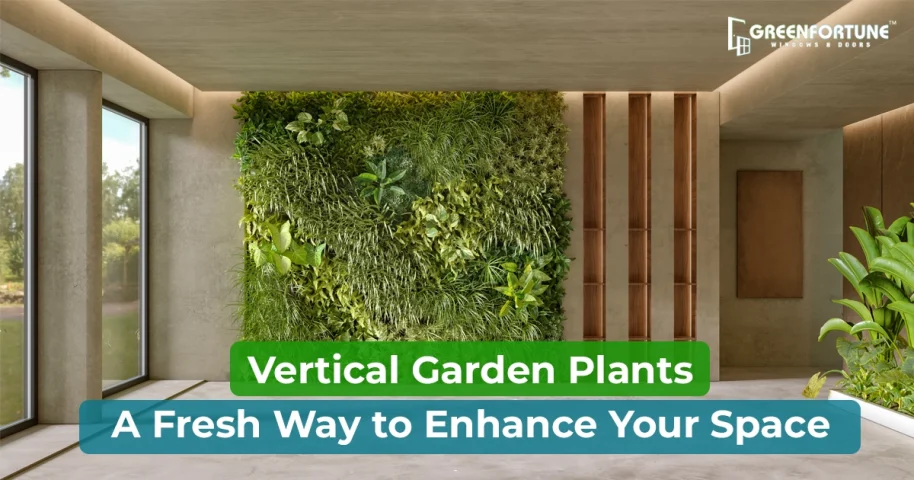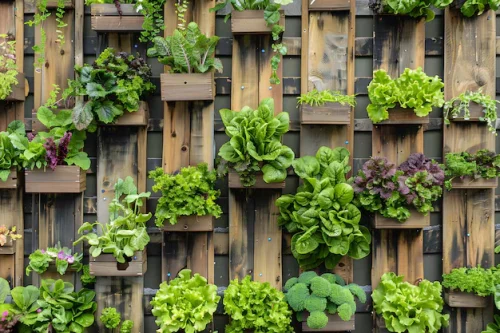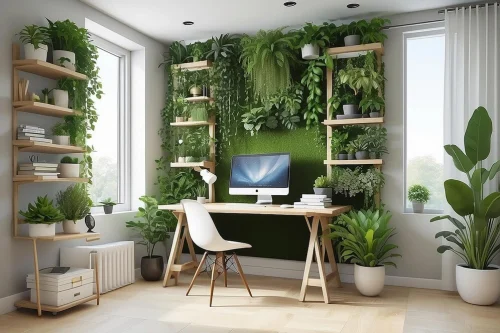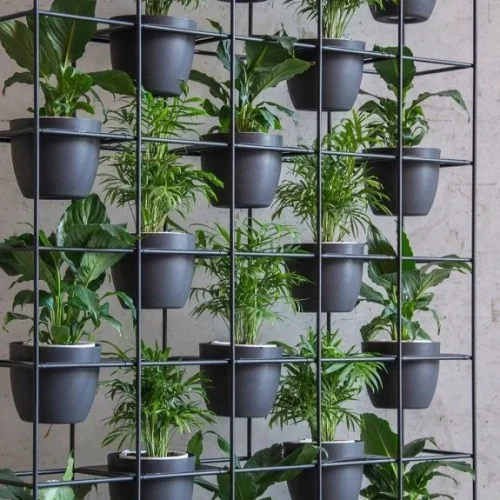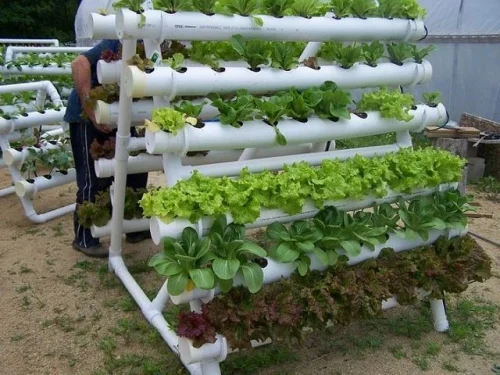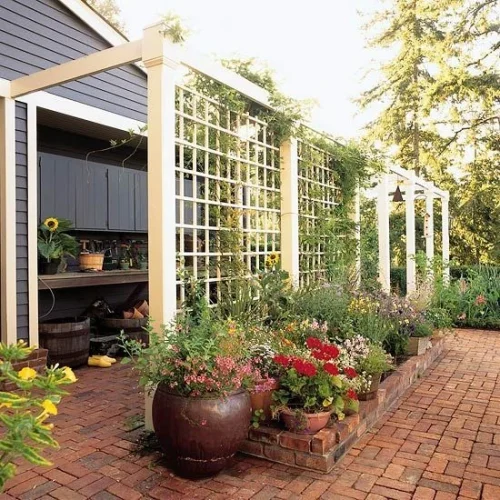
A Comprehensive Guide to Fixing Paint Chalking and Extending Paint Life
April 8, 2025
Solid Wood vs Plywood Cupboard: Which is Best for Your Home?
April 8, 2025A vertical garden can completely transform any space, and vertical garden plants make it possible. Recently, homeowners have become more inclined to use greenery to enhance their modern interiors. But sometimes, space is a problem. With the right vertical garden plants, you can bring nature indoors, even in spaces that seem too small.
What is a Vertical Garden?
A vertical garden is a system where plants grow vertically, usually supported and attached to a wall or other structure, rather than spreading across the ground. This setup works wonders in small spaces, making it possible to enjoy nature indoors without the need for a large garden.
The Best Vertical Garden Plants for Your Home
The key to a thriving vertical garden lies in choosing the right plants. Some vertical garden plants adapt better than others to vertical structures, based on their growth habits, maintenance and requirements.
- Herbs
People dream of having their own kitchen garden with fresh basil, mint, coriander, and vegetables growing right in front of their eyes! Vertical herb gardens are ideal for kitchens, where you can have easy access to your favorite cooking ingredients..
- Orchids
Orchids may seem like a challenge, but they grow well in vertical gardens if they get enough humidity and indirect light. These plants add an elegant touch to any space.
- Pothos
Pothos is one of the easiest plants to grow in vertical gardens. It has long, trailing vines and is great at cleaning the air, which makes it a great addition to any home.
- Philodendrons
Philodendrons are easy-to-grow plants that climb and spread out and do well in vertical gardens. Their large, lush leaves bring a tropical feel, whether you place them indoors or outdoors.
- Bromeliads
Bromeliads add a burst of colour to vertical gardens. They are very low maintenance and need less water even in different climates.
- Flowering Plants
If you want to add colour to your vertical garden plants like petunias, begonias, and geraniums are the top choice. If you prune them regularly, you can keep them blooming for a long time.
- Ferns
Ferns do very well in vertical gardens because they thrive in shade and high humidity. Their leaves are called fronds, which add a soft, textured look and make them perfect for bathrooms, patios, or indoor green walls.
- Succulents
Succulents like echeveria, sedum, and jade are a great choice for vertical gardens. These plants store water in their leaves and hence require less water. These plants add a modern, sculptural touch to vertical gardens.
Vertical Garden Plastic Plants
For those who want the look of greenery without the hassle, vertical garden plastic plants are an excellent option. These require zero maintenance and remain vibrant all year long.
Types of Vertical Gardens and Their Benefits
Different types of vertical gardens cater to different needs and preferences. Understanding these can help you choose the right one for your home.
- Wall-Mounted Gardens
Wall-mounted gardens are attached directly to walls using modular containers or panels. They are perfect for small indoor spaces, balconies, or patios, where space is at a premium.
- Freestanding Vertical Gardens
These movable structures offer flexibility in placement. Some freestanding systems even come with built-in irrigation, making maintenance much easier.
- Hydroponic Vertical Gardens
Hydroponics is a method that grows plants without soil, using nutrient-rich water. This system is ideal for those looking to grow their vertical garden plants faster and more efficiently.
- Trellis Gardens
A trellis supports climbing plants like ivy or jasmine, making it perfect for transforming blank walls into beautiful green facades. It’s ideal for adding beauty and privacy to outdoor spaces.
- Pocket Planters
Fabric pocket planters are an affordable way to grow several plants in a small space. These work well for herbs and flowering plants and can easily be hung on kitchen or outdoor walls.
- Modular Green Walls
These pre-planted panels make installation super easy. They provide a neat, professional look and are perfect for creating a lush green feature in your home.
Selecting the Right Vertical Garden Size
The size of your vertical garden can have a big impact on how it looks in your space. The size selection is based on the types of vertical garden you choose
- Small (2-4 feet high): Perfect for compact spaces such as kitchens, bathrooms, or balconies.
- Medium (4-6 feet high): Ideal for living rooms, patios, or garden fences.
- Small (2-4 feet high): Perfect for compact spaces such as kitchens, bathrooms, or balconies.
- Large (6+ feet high): Best for larger installations, such as privacy walls or full green walls.
How to Maintain Vertical Garden Plants
Caring for your vertical garden plants helps them stay healthy and look their best. Here’s what you need to know:
- Watering: Different plants need different amounts of water. Make sure you know how much watering is required.
- Pruning: Trim your plants regularly to keep them neat and prevent overgrowth.
- Fertilizing: Organic fertilisers are great for helping your plants grow.
- Sunlight: Make sure your plants are placed in the right spot based on their sunlight needs.
- Pest Control: Keep an eye on your plants for pests and use natural solutions like neem oil to keep them under control.
Apart from above benefits, vertical garden plastic plants allow for more flexibility in terms of size since there are no concerns about plant growth.
Who Should Choose Vertical Garden Plastic Plants?
Plastic vertical gardens are perfect for busy professionals, urban dwellers, or anyone looking for a stylish and effortless way to bring greenery indoors or outdoors. They offer several benefits:
- No Maintenance Required – These plants do not need watering, pruning, or fertilizing and require minimal upkeep.
- Consistently Fresh Appearance – They remain remain lush and fresh looking throughout the year as they are unaffected by seasonal changes.
- Cost-Effective Solution – They help reduce expenses by eliminating the need for plant care and replacements.
Safe for Allergy Sufferers – They are a safe alternative for individuals with pollen allergies or sensitivities to natural plants.
Ready to Make Your Homes Greener?
A vertical garden is more than just a trendy design choice. It's a long-term investment in your home’s aesthetics and overall ambiance. Whether you choose vertical garden plants or plastic plants, check out the designs and options available at Greenfortune, featuring a variety of uPVC windows and doors. Explore here.
FAQs
- How long do vertical garden plants last?
The lifespan of vertical garden plants depends on the type and weather condition of your location. Perennial plants like ferns and philodendrons can last for years, while annuals may need to be replaced every season.
- Do vertical gardens attract pests?
Yes, vertical gardens can attract pests, but with proper care, such as pruning and using natural repellents like neem oil, they can be kept in check.
- Can I install a vertical garden on any wall?
Vertical gardens can be installed on most walls, but it’s important to consider factors like the weight-bearing capacity of the wall and its exposure to sunlight and moisture.
- What is the best irrigation system for vertical gardens?
Drip irrigation is the most effective system for vertical gardens. It delivers water directly to plant roots, reducing water waste and ensuring consistent hydration.




